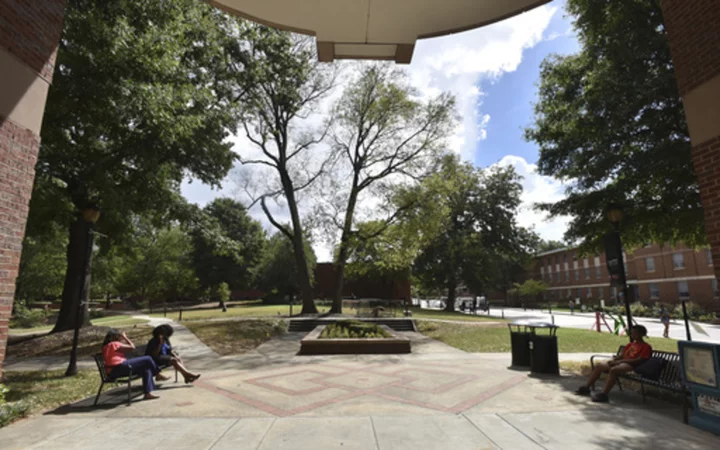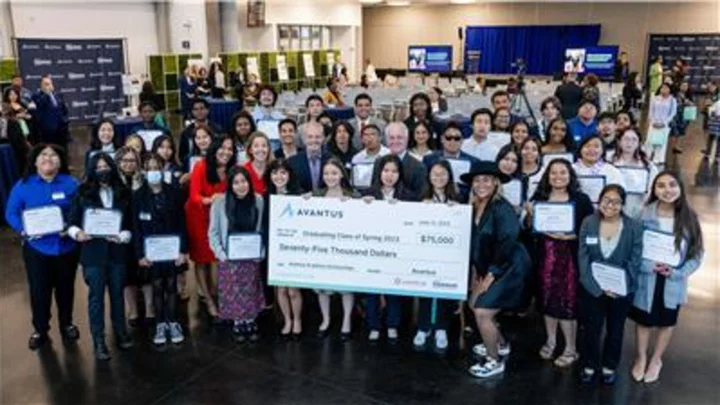WASHINGTON (AP) — As an alternative to affirmative action, colleges from California to Florida already have tried a range of strategies to achieve the diversity they say is essential to their campuses. Many have given greater preference to low-income families. Others started admitting top students from every community in their state.
But years of experimentation — often prompted by state-level bans on considering race in admissions — left no clear solution. In states requiring race-neutral policies, many colleges saw enrollment drops among Black and Hispanic students, especially at selective colleges that historically have been mostly white.
Now that the Supreme Court has struck down the consideration of race in college admissions, schools nationwide will face the same test. Some have warned the development could erase decades of progress on campus diversity.
At Amherst College, officials had estimated going entirely race-neutral would reduce Black, Hispanic and Indigenous populations by half.
“We fully expect it would be a significant decrease in our population,” said Matthew McGann, Amherst's director of admission, earlier this year.
Facing a conservative Supreme Court that appeared skeptical from the start, colleges have been preparing for a rollback. Some were considering adding more essays to get a better picture of an applicant’s background, a strategy invited in Thursday's Supreme Court ruling.
“Nothing prohibits universities from considering an applicant’s discussion of how race affected the applicant’s life, so long as that discussion is concretely tied to a quality of character or unique ability that the particular applicant can contribute to the university,” Chief Justice John Roberts wrote for the court's conservative majority. “Many universities have for too long wrongly concluded that the touchstone of an individual’s identity is not challenges bested, skills built, or lessons learned, but the color of their skin. This Nation’s constitutional history does not tolerate that choice.”
Other colleges were planning to boost recruiting in racially diverse areas, or admit more transfer students from community colleges.
The court took up affirmative action in response to challenges at Harvard University and the University of North Carolina. Lower courts upheld admission systems at both schools, rejecting claims that the schools discriminated against white and Asian American applicants. But at Supreme Court arguments in late October, all six conservative justices expressed doubts about the practice, which had been upheld under Supreme Court decisions reaching back to 1978, and as recently as 2016.
While they awaited this latest ruling, schools were taking lessons from colleges that don’t consider race. Nine states previously banned affirmative action, starting with California in 1996 and most recently Idaho in 2020.
After Michigan voters rejected it in 2006, the University of Michigan shifted attention to low-income students.
It sent graduates to work as counselors in low-income high schools. It started offering college prep in Detroit and Grand Rapids. It offered full scholarships for low-income Michigan residents. More recently, it started accepting fewer early admission applications, which are more likely to come from white students.
Despite those efforts, the university offers itself as a cautionary tale. The share of Black and Hispanic undergraduates hasn’t fully rebounded from a falloff after 2006. And while Hispanic enrollments have been increasing, Black enrollments continued to slide, going from 8% of undergraduates in 2006 to 4% now.
The campus is drawing more low-income students, but that hasn’t translated to racial diversity, said Erica Sanders, the director of undergraduate admissions at Michigan.
“Socioeconomic status is not a proxy for race,” Sanders said.
At the same time, some of Michigan's less selective colleges have fared better. At nearby Eastern Michigan University, the number of students of color increased, reflecting demographic shifts in the state. It illustrates what experts say is a chilling effect seen most acutely at selective colleges — students of color see fewer of their peers at places like Ann Arbor, prompting them to choose campuses that appear more welcoming.
Growing up in Ann Arbor, there was an expectation that Odia Kaba would attend the University of Michigan. When her application was deferred, she started at Eastern Michigan with plans to transfer to Ann Arbor her sophomore year.
By then, Kaba was getting daily texts from her sister, who attended U-M, describing the microaggressions she faced as a Black student on campus. Rooms went silent when she walked in. She was ignored in group projects. She felt alone and suffocated.
“Why would I go to U of M?” Kaba, 22, remembers thinking. “I'm just going to be stuck with people that don't look like me, can't relate to me, and with no way to escape it.”
Kaba stayed at Eastern Michigan and graduated with a degree in quantitative economics this year. Even though it's a mostly white campus, Kaba said she found pockets of diversity that helped make her comfortable.
“I'm in economics, which is a white male-dominated space. But I can walk out of the classroom and be surrounded by my people, and I just feel safe," she said.
The University of California saw similar enrollment slides after a statewide ban in 1996. Within two years, Black and Hispanic enrollments fell by half at the system’s two most selective campuses, Berkeley and UCLA. The system would go on to spend more than $500 million on programs aimed at low-income and first-generation college students.
The system also started a program that promises admission to the top 9% of students in each high school across the state, an attempt to reach strong students from all backgrounds. A similar promise in Texas has been credited for expanding racial diversity, and opponents of affirmative action cite it as a successful model.
In California, the promise drew students from a wider geographic area but did little to expand racial diversity, the system said in a brief to the Supreme Court. It had almost no impact at Berkeley and UCLA, where students compete against tens of thousands of other applicants.
Today at UCLA and Berkeley, Hispanic students make up 20% of undergraduates, higher than in 1996 but lower than their 53% share among California's high school graduates. Black students, meanwhile, have a smaller presence than they did in 1996, accounting for 2% of undergraduates at Berkeley.
Opponents of affirmative action say some states have fared well without it. After Oklahoma outlawed the practice in 2012, the state’s flagship university saw “no long-term severe decline” in minority enrollments, the state's attorney general told the Supreme Court.
It pointed to a recent freshman class at the University of Oklahoma that had more Hispanic, Asian and Native American students than in 2012. The share of Black students fell, but it wasn’t far from flagship universities in other states that allow affirmative action, the state said.
Still, many colleges expect racial diversity could take a hit. With affirmative action struck down, colleges fear they will unknowingly admit fewer students of color. In the long run, it can be self-perpetuating — if numbers fall, the campus can appear less attractive to future students of color.
That's a problem, colleges say, because racial diversity benefits the entire campus, exposing students to other worldviews and preparing them for a diverse workforce.
“We need to make sure we’re sending the message that we’re committed to diversity, independent of what the court does,” said Doug Christiansen, dean of admissions at Vanderbilt University.
The stakes are high for colleges like Vanderbilt, where Black students make up 9% of the student body, more than most highly selective colleges. But the school isn’t planning a major shift in strategy, Christiansen said this spring. Instead, it plans to build on efforts to recruit in diverse areas and expand its outreach.
In some ways, colleges have been preparing for an end to affirmative action since earlier legal challenges, Christiansen said. “These are things we’ve had to think about for quite some time,” he said.
Beyond race, the decision has the impact to reshape other admissions policies. To draw more underserved populations, experts say colleges may need to do away with policies that advantage white students, from legacy preferences and early admission to standardized test scores.
At Amherst, officials ended legacy preferences in 2021 and expanded financial aid. The college is looking for ways to sustain its diversity, but officials say options are limited.
“I don’t know if there’s going to be some terrific innovation,” McGann said. “If a school had figured it out, they would be doing it already.”
___
The Associated Press education team receives support from the Carnegie Corporation of New York. The AP is solely responsible for all content.









